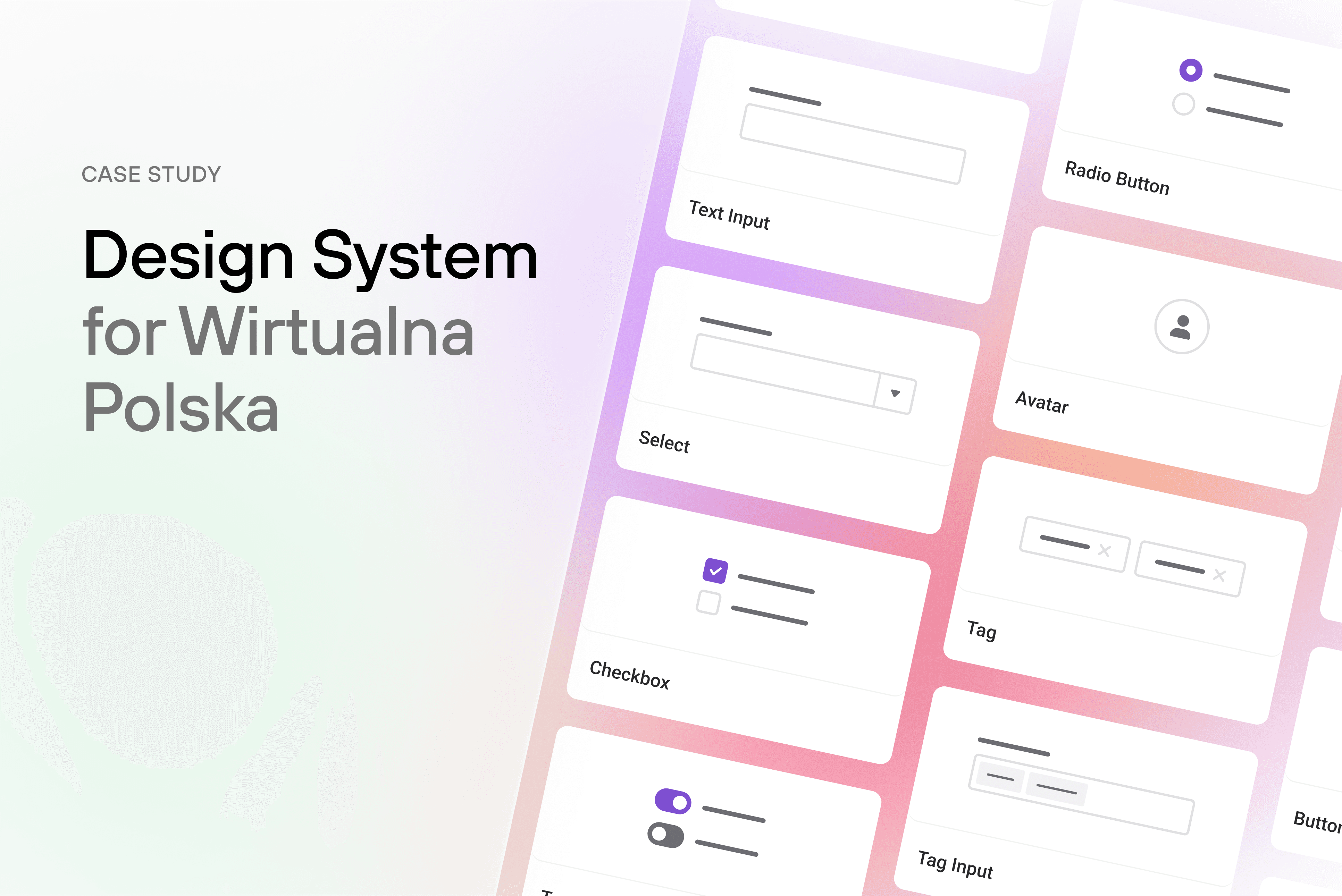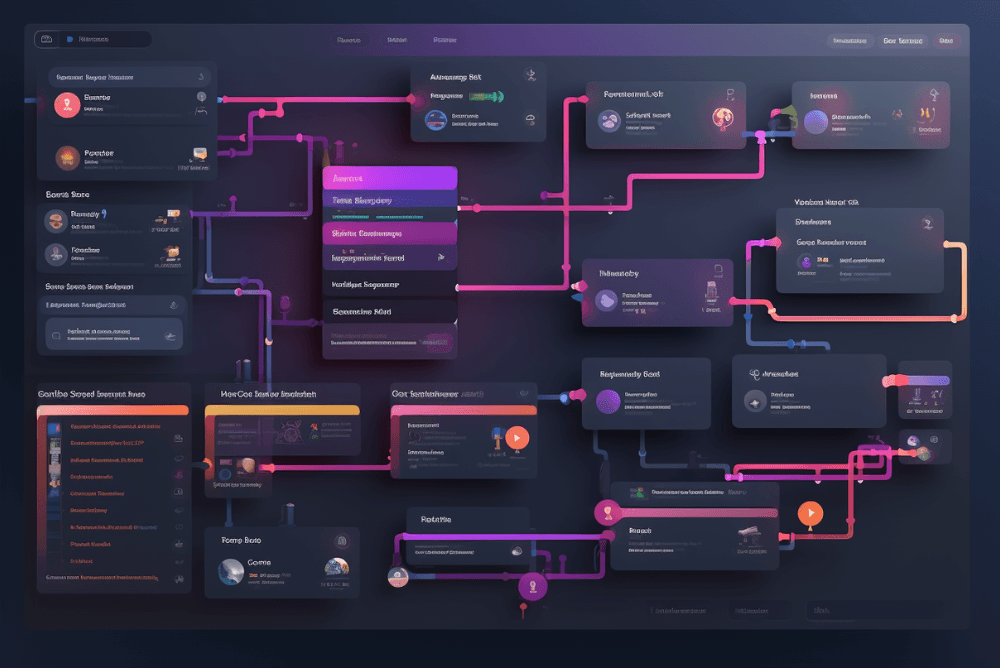Why product design matters: Impact of UX & UI on every department
11 Jan 2024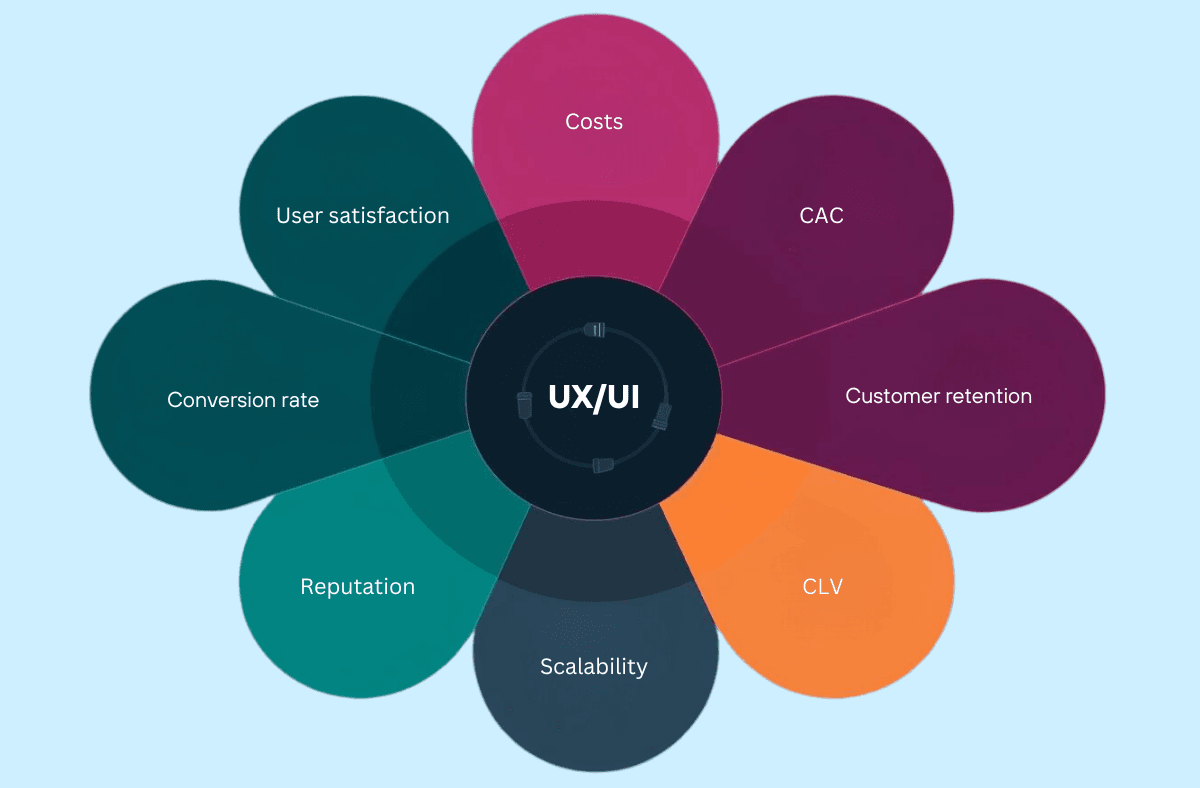
Contents of this article:
- Introduction to UX/UI design
- Impact of a product UX/UI on Strategy
- Impact on Marketing
- Impact on Sales
- Impact on Product/Operations
Reading time: 7 minutes
Many products offer great value to their customers, but due to UX/UI shortcomings, it is hard for users to get the most out of them. Outdated software design leads to customer frustration, product abandonment, and lost revenue. Let’s uncover why this happens and how product design impacts all areas of your business, focusing on UX in the first place.
Let us tell you a short story of Omar Farook, the founder and CEO of VC-funded SaaS company Glorify.com, which provides online graphic design tools for e-commerce. He recently described how his company struggled with the UX design of their product, leading to more costs and less revenue. Farook wrote:
From the perspective of an established company, these figures can seem ridiculously low – compared to the costs and revenues of businesses that have been on the market for years. However, the problem faced by the young entrepreneur is similar to the difficulties that many software companies face (but maybe they don’t recognise them) – and that is that the UX design of their product can be the biggest bottleneck on the road to overall success, not to mention the costs it generates.
Why? UX and UI design are rarely taken into consideration during strategic planning. If the product serves its purpose and the company brings profits, UX design can be seen as a secondary factor. The challenge begins when, after some successful years, the market changes, the revenue drops, or a new competitor appears. In such a case, business owners acknowledge that the product needs to change and improve – but they are not always aware that it can be achieved with the UX design.
Legacy of software solutions
Traditionally, companies that are providing web or desktop software haven’t had to put as much emphasis on UX and UI as customer-facing apps. Most well-known B2B and B2C software tools were built at least a decade ago when web app design was in its infancy and browser technology did not allow for rich experiences. Often, they are not efficient enough and require a lot of time and effort to manage them on the back-end side.
But software is not designed or built with a 20-year vision in mind. It evolves based on market demand, available technology and competitive pressures. If its architecture becomes confusing over the years, it affects the overall business logic. This hurts the entire organisation, especially the areas we focus on here: Strategy, Marketing, Sales and Product & Operations. Let’s take a closer look at each of them.
1) Strategy
One of the biggest challenges for founders, CEOs and managing directors is that UX/UI design can profoundly influence an organisation's future vision of success, but it still tends to be underestimated.
As the person responsible for the strategy, imagine looking ahead five years from now – you still have a carefully developed product that has served many loyal customers for years. How did you achieve that? Five years is a technological lifespan; you must evolve to stay in the race. What will give you a competitive advantage in five years? What will help you attract new customers and make a profit? What will keep your current customers using it?
And, most importantly, what do you have to do now to achieve that?
The immediate answer is that you need a great product. However, this is only partially true. Even the best product will not stand the test of time if the UX design is outdated and does not keep up with current trends and user needs. A weak UX causes problems in all business areas, from sales and marketing to operations and product. Sales can tell you that the product can not be sold with weak design, marketing will tell you that it can not be promoted effectively, the product team will tell you that it can not scale, and the operations team will tell you that it drives up costs.
An outdated UX/UI design hinders the company's future success, while it should solve your strategic problems and be the catalyst for achieving KPIs. An obsolete design blurs a successful visionary future for your business. It must evolve, change and adapt to market conditions to meet your customers’ needs and solve their business problems. No matter how good the product idea is, investing in design is key to the future of your business.
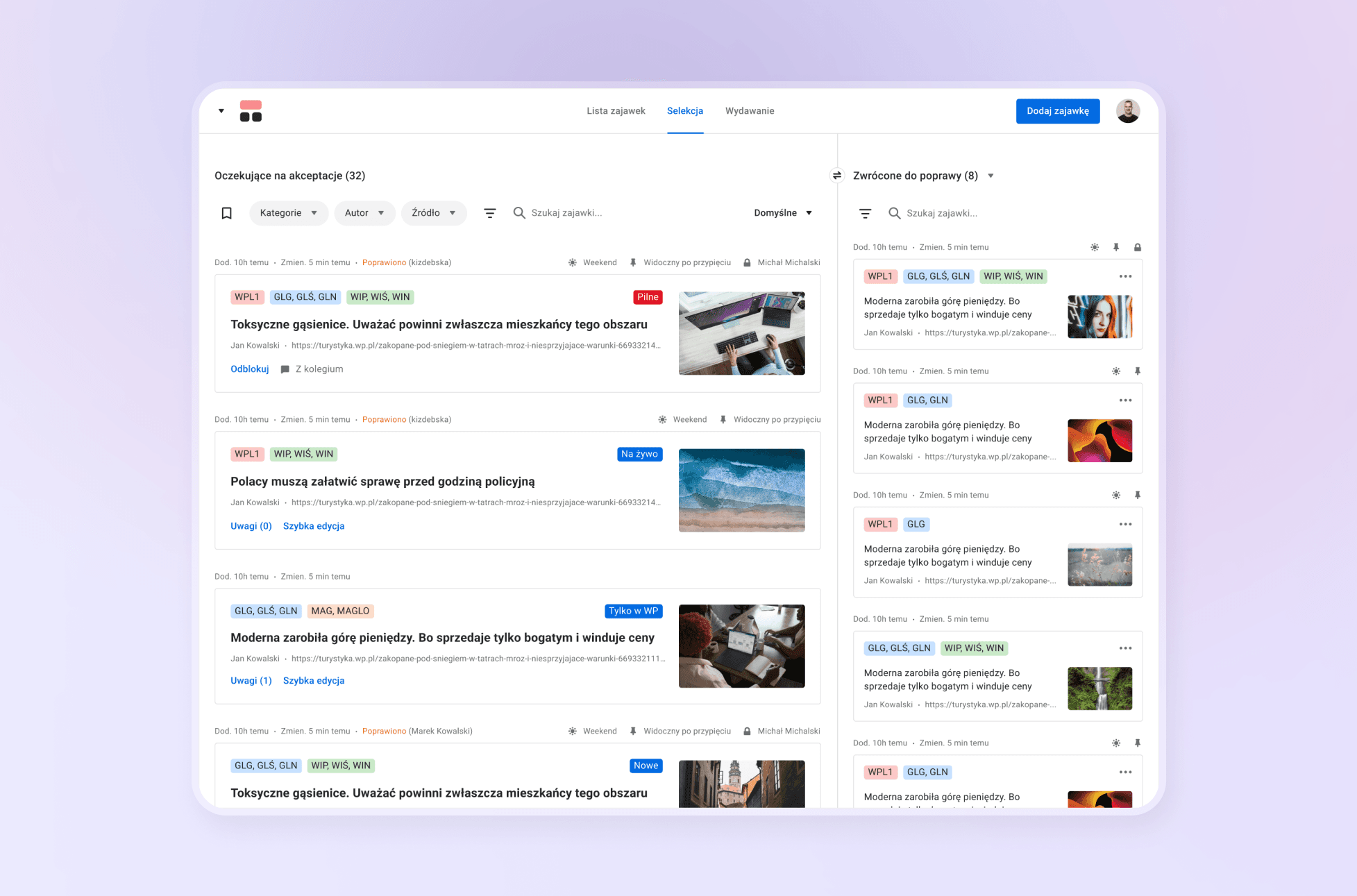
A new UX/UI of WP publishing and editing software
WP: 10% rise in efficiency
A future vision of success was the motivation of Wirtualna Polska, one of the largest media and tech holdings in the CEE region, with whom we worked on transforming their back-office editorial software ecosystem. For four years, we worked on integration processes that improved their software's effectiveness (increasing output, quality and results) and efficiency (saving time, effort and money). The idea was to remove tools that add little or no value to the publishing process and make the software more intuitive so journalists can work faster.
Let’s mention just a couple of key results:
- The efficiency of daily content production increased by 10%.
- The average time to urgent news publication decreased by more than 70%.
- 81% of users stated that the tool is intuitive on first contact.
2) Marketing
Now, let’s move on to marketing and how outdated UX affects this area. Imagine a scenario where your brand or product struggles with an unintuitive user experience. How is the marketing team supposed to communicate the value proposition to the target audience if the product is hard to navigate and users are frustrated? How can they promote and highlight the product when customers complain about it? How can the team implement an effective marketing strategy when it is constantly reacting to communication challenges?
The shortcomings in UX and UI design impact the overall communication strategy and limit the channels for brand promotion. They can also damage the brand's reputation, as news spreads quickly today through word of mouth, online reviews and social media platforms. Users who have had a bad experience are more likely to share their frustration with others – and you end up managing PR crises instead of crafting and delivering your own message.
Yet, if the experience is seamless, you can increase customer engagement and loyalty. Satisfied users will not look for alternatives for your product – they may even start to love it, feel connected to it, enjoy it – and become your brand ambassadors. This not only helps to improve customer loyalty but also opens up a whole new marketing potential. It also lowers the customer acquisition costs.
Kadme: Shorter time to value
Look at the project we did for Kadme , one of the leading software providers in the hydrocarbon industry. The software for geologists had great features but was quite unintuitive, very complex, and could only be used by a very small group of highly specialised data managers. This made it hard to promote and sell externally, despite the need on the market.
The app redesign brought Kadme new possibilities. Now, Kadme’s software is a valuable and user-friendly app tailored to the broader target group of oil and gas specialists. It also has a much lower learning curve than the previous solution.
The refreshed product allowed Kadme to launch it as new software on more markets, prepare a dedicated marketing campaign and shorten the time to value – the time it takes for new users to discover a product's 'aha' moment.
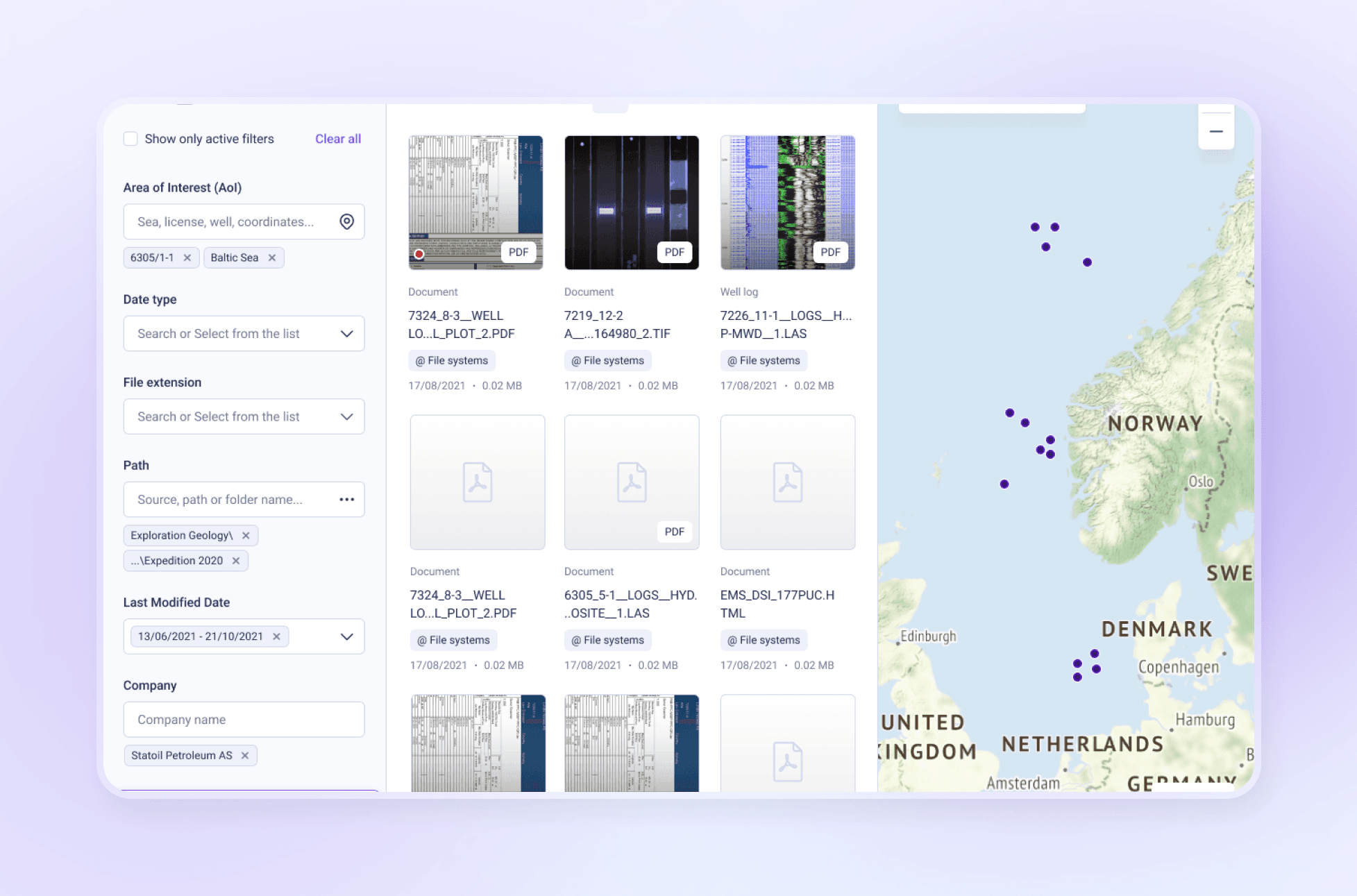
The app redesign brought Kadme new marketing possibilities.
3) Sales
For sales, the UX/UI design matters for two crucial reasons: conversion and retention rates. If the user experience falls short, potential customers will abandon the product and not convert into actual buyers. They have countless other choices today (and little patience) – so they will just leave your sales funnel and never return. What is more, customers who have a negative experience with the product, often share it with others.
On the other hand, a satisfied customer, pleased by a seamless UX design, is more likely to continue engaging with the product or service. This leads to more frequent transactions and a higher monetary value per customer interaction, boosting Customer Lifetime Value (CLV). A higher CLV means that each customer interaction carries a greater monetary value, proving the enduring impact of UX on the overall sales strategy.
Consequently, improved customer loyalty and retention means higher conversion rates, increased sales and revenue.
Business value of UX design
The evidence gathered from the industry leaders shows that:
– A well-designed user interface can increase your website’s conversion rate by up to 200%.
– 66% of customers are willing to pay more for a great experience
– 84% of customers say a company’s overall experience is as important as its products and services.
– 72% of customers will tell 6 other people about their good user experience
This way, positive UX not only optimises immediate sales but also establishes the foundation for sustained growth by nurturing enduring customer relationship.
Feedink: meeting the clients’ needs
That’s the case we observed when working on a design for Feedink, a software provider specialising in product feed management, supporting online shops to integrate their offering across channels. After a decade of successful operations, Feedink recognised the need to revamp its product offering to meet the evolving needs of its customers.
The modernisation has enabled Feedink to address the needs of its customers and encourage them to stay with the service provider in a highly competitive market. It also helped attract new customers, as a refreshed product could be a magnet in the sales funnel. Overall, this opened new opportunities and conversations with potential customers and improved customer experience.
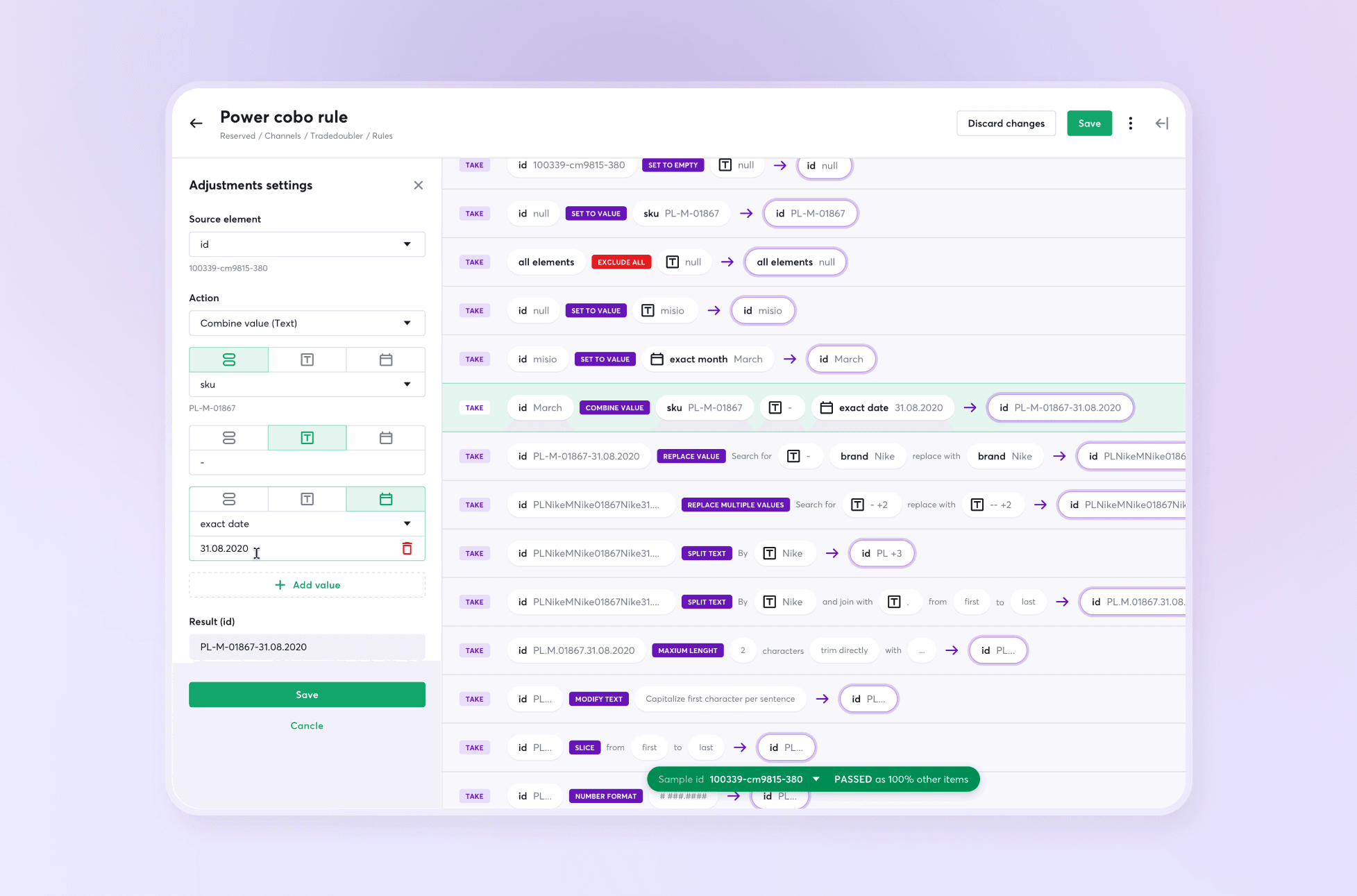
Feedink successfully overhauled its product, offering a more efficient and customisable solution that met the needs of a rapidly changing market.
4) Product and Operations
From the product perspective, an outdated UI/UX usually leads to many problems, starting with higher and higher maintenance costs. They can be caused by compatibility issues with evolving technologies that force frequent updates or by security issues associated with outdated designs that require continuous fixes. UX can also limit the product's scalability, making it harder to grow and accelerate its development. Every new feature becomes costly, requiring a lot of time and labour.
Moreover, poor UX can result in a surge in customer demands, creating a high ticket volume – the users seek assistance from customer support, which requires additional resources – and the costs might be extreme here. Sometimes, they even impact the operational efficiency and profitability of the entire organisation.
Conversely, a good product UX decreases maintenance costs and accelerates product development, enabling quicker releases and adaptations to market needs. Also, it accelerates the onboarding process for new employees, reducing the time and resources required to get them up to speed with the product interface and functionality.
WP: creating an app in 42 hours
This is precisely what happened in Wirtualna Polska with the back-office system redesign we mentioned earlier. Unifying the design of 30 different apps under one coherent design system allowed for unprecedented product development acceleration and lowered maintenance costs. The design system made it possible to build new products faster, reducing the time and effort required to create, develop and test a new app. In one case, a new app was built in just 42 hours, and new modules can be created four times faster. You can read more about the benefits of a design system here.
What’s also crucial here is that it significantly reduced the time to onboard a new employee who will work with the system, which means substantial cost savings.
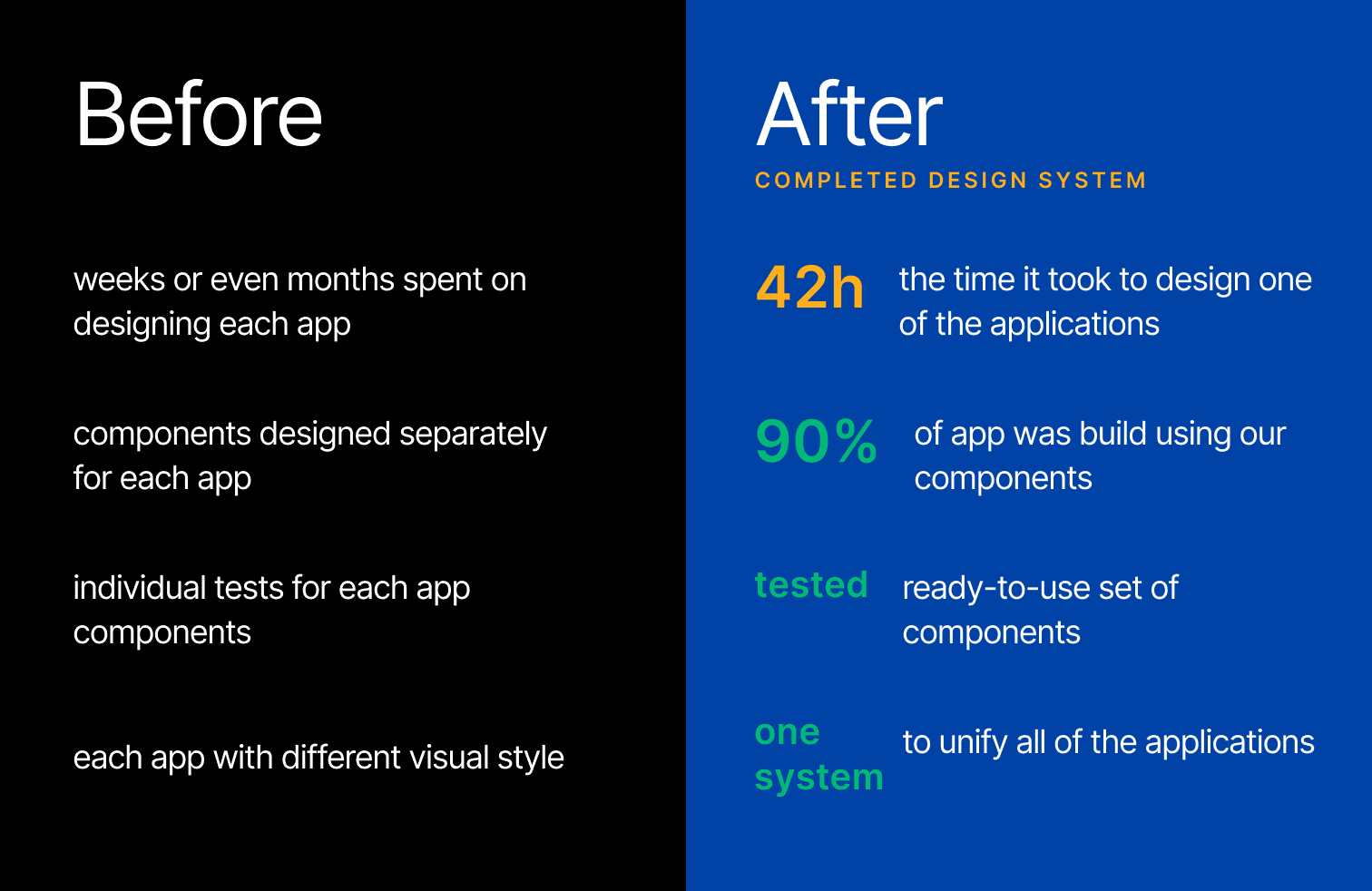
Conclusion: Process, not just the final outcome
You know that the cost of a poor user experience is not just financial – it impacts user satisfaction, retention, brand reputation, customer loyalty and overall business success. Therefore, companies can achieve a “positive domino effect" on all departments if they invest in and prioritise a good UX.
If you’re thinking about it, a good place to start is to work with UX/UI experts with a proven track record with software-making companies and focus on the UX/UI process – not just the final design outcome. At Autentika, we have been helping companies with their digital products for over 18 years, and our UX/UI discovery process is considered the gold standard in the industry.
If you want to discuss your current UX/UI and get honest advice and recommendations, – contact Oleg or Slawek. The sooner, the better for you and your product.
Contact details
-
Sławek Wójcik, Head of New Business
-
Oleg Nikolaienko, Business Development Manager

